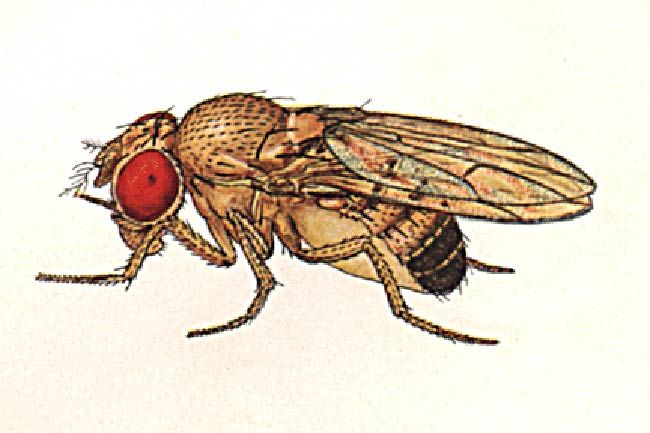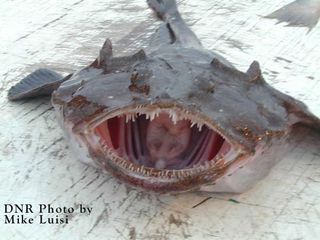Latest Buzz: Fly Brains Manipulated by Remote Control

Like a hypnotist who gets a man to act like a chicken when he hears a code word, scientists have genetically modified fruit flies to jump or beat their wings when flashed with lasers.
"This is a new approach to neuroscience," said Gero Miesenbock from the Yale University School of Medicine. "We can not only passively observe but actively control behavior."
The remote control system was announced Thursday. It could one day replace the surgically inserted electrodes that scientists currently use to study neuron activity in the brain.
"If we had impaled the flies with electrodes, we would not have been able to see the full range of their behavior," Miesenbock told LiveScience.
Besides being unwieldy to work with, electrodes can inadvertently stimulate nearby neurons. The new phototrigger technique can target just one type of neuron to activate, using a genetic pre-selection trick.
Lock, key, trigger
The remote control setup - developed by Miesenbock and Susana Lima, both from Yale University School of Medicine - can be broken down into three components: a lock, a key, and a trigger.
Sign up for the Live Science daily newsletter now
Get the world’s most fascinating discoveries delivered straight to your inbox.
The lock is an ion channel - a kind of protein that allows charged particles to pass through a cell membrane. The researchers genetically altered particular neurons to have an ion channel not normally found in fruit flies.
The key is a molecule called ATP. By binding to the ion channel, ATP makes the neuron fire. Typically, ATP is a form of fuel, or "energy currency," inside cells, "but there is very little of it flowing in between cells," Miesenbock said. So the scientists had to inject ATP into the fly brains.
To regulate the firing of the altered neurons, the researchers isolated the injected ATP in a molecular cage that breaks open when struck with an ultraviolet laser beam.
Lima and Miesenbock placed their ion channel lock in the giant fiber system, a small set of nerve cells that controls the fruit fly's escape movements -- like jumping and wing flapping.
When flashed with a 200-millisecond laser trigger, flies outfitted with locks and keys responded between 60 and 80 percent of the time with the expected escape behavior. And this was not because the laser scared the flies. In fact, blind flies reacted in the same way. The laser light penetrates the flies' cuticle, or "skin," to free the caged ATP.
The findings will be published in the 8 April issue of the journal Cell.
A genetic switch
Being able to precisely select classes of neurons to stimulate provides a separate genetic tool for understanding how the brain controls behavior.
"The current way to do this is to destroy the function genetically and then look for behavioral deficits," Miesenbock said.
Waiting for something not to happen takes longer and is more ambiguous than turning on a stimulus and immediately seeing the behavior you are looking for.
One of the drawbacks of remote control, however, is that injecting the caged ATP into the brain is laborious. The scientists tried feeding the flies ATP, but it did not reach the brain.
"Nevertheless, these constraints are really quite minimal for this clever new technique that offers so much potential for defining the neural circuits that can drive behavior upon activation," wrote Ronald Davis of Baylor College in an accompanying commentary.
- Flight of the Fly: An X-ray Movie
- Brain Power: Mind Control of External Devices
- Brain Breakthrough: Scientists Know What You'll Do
- Venus Flytrap's Speed Secret Revealed

Brain Breakthrough: Scientists Know What You'll Do
Mind Control of External Devices
Ancient Behaviors Hard-Wired in Human Brain
Your Brain Works Like the Internet
Only Using Part of Your Brain? Think Again
Monkey's Brain Runs Robotic Arm
Which Animal is the Ugliest?
















